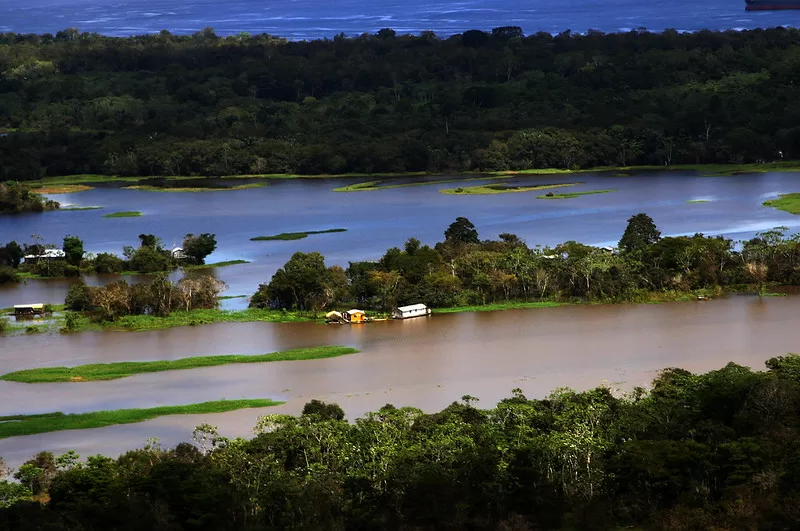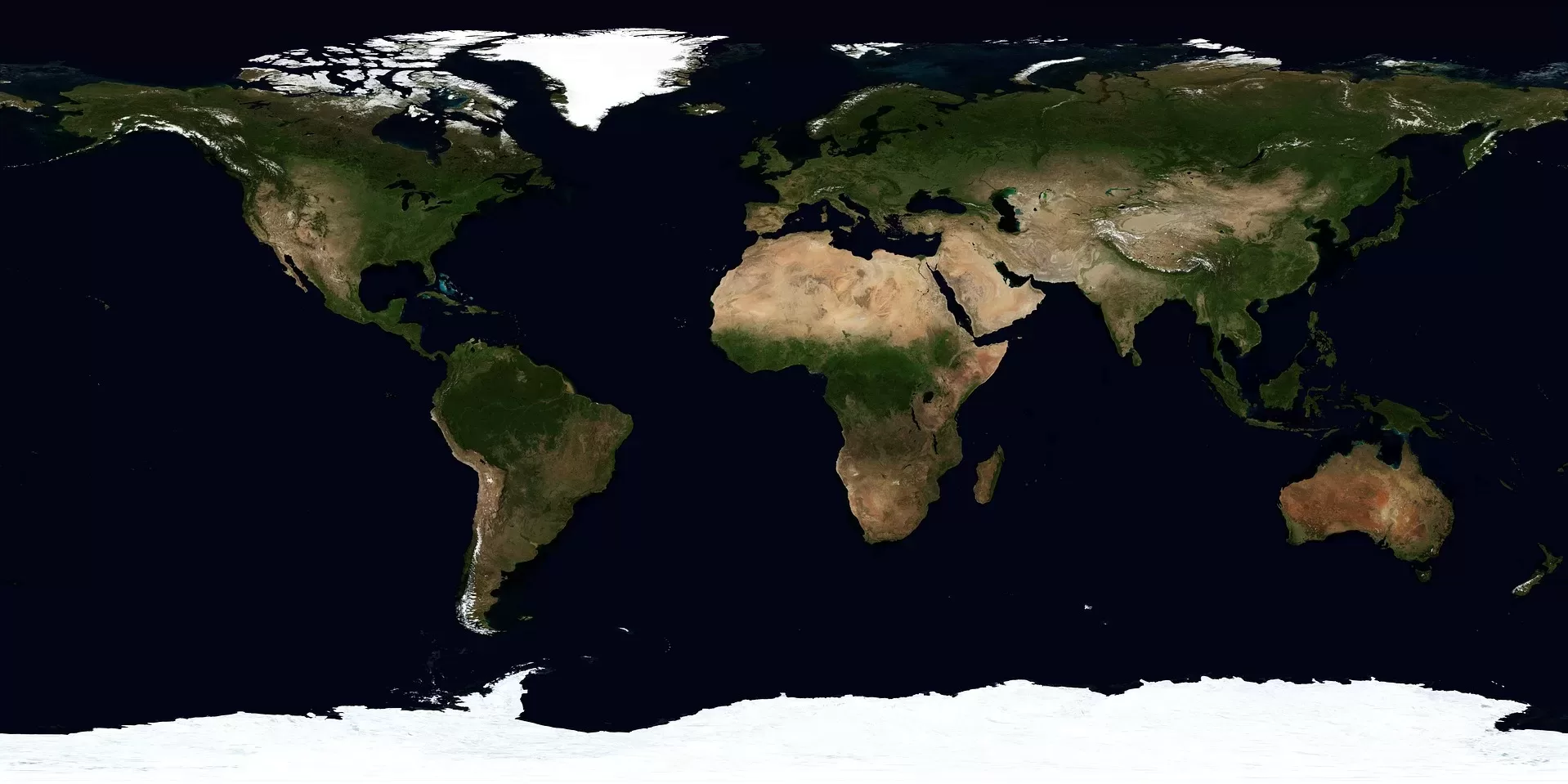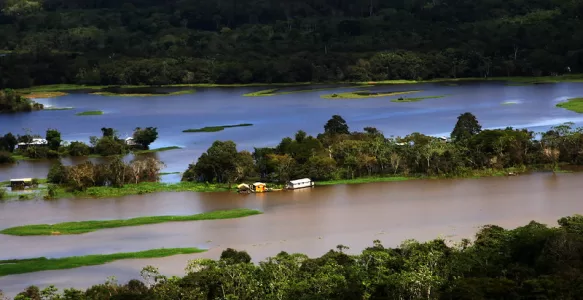The Amazon, known as the largest tropical biome on the planet, is a vast and lush forest covering approximately 7 million km², spanning territories of six South American countries: Brazil, Peru, Colombia, Venezuela, Ecuador, and Bolivia. This immense region is crucial for maintaining global climate stability, responsible for a significant share of oxygen production, hosting unparalleled biodiversity, and playing essential roles in regulating the water cycle and the Earth’s climate.

General Characteristics of the Amazon
The Amazon rainforest is one of the most biodiverse regions on Earth, containing around 40,000 plant species, 3,000 freshwater fish species, 1,300 bird species, 430 mammal species, and an innumerable variety of insects and microorganisms. Its vegetation comprises a range of ecosystems, including igapós (permanently flooded areas), várzeas (seasonally flooded areas), and terra firme (non-flooded lands), forming a complex web of life that sustains numerous endemic species—those found exclusively within this biome.
The soil of the Amazon is predominantly sandy, low in fertility, and highly permeable, which explains the rapid regeneration of vegetation after deforestation and fires. The flora, adapted to high humidity and heat, features large trees such as the Brazil nut, rubber tree, jatobá, along with countless epiphytes, bromeliads, and orchids.
Geological and Hydrographic Formation
The origins of the Amazon date back approximately 130 million years, with the breakup of the supercontinent Gondwana and the formation of the Andes mountain range, which directly influences the region’s rainfall patterns and river flow. The Amazon River, originating in the Andes in Peru, is the largest in the world by water volume, with an average discharge of about 109,000 m³/s, flowing approximately 6,868 km to the Atlantic Ocean.
The Amazon basin is the largest on the planet, covering roughly 7 million km² across eight countries. This extensive network of rivers and tributaries, with over 1,000 main tributaries, forms one of the world’s largest navigable systems, facilitating transportation of people, goods, and natural resources. Major rivers in this basin include the Madeira, Xingu, Tapajós, Purus, Juruá, Jari, among others.
Biodiversity and Ecosystem
Amazonian biodiversity is among the highest globally, playing a crucial role in maintaining the Earth’s ecological balance. The fauna includes iconic species such as the jaguar, pink river dolphin, blue macaw, manatee, along with countless species of snakes, frogs, insects, and birds. The flora is equally diverse, with trees reaching dozens of meters in height, as well as medicinal plants, exotic fruits, and endemic species with significant economic and scientific value.
The forest functions as a massive climate regulation system, absorbing carbon, maintaining the water cycle, and producing rainfall that benefits not only the region but also distant areas. The rivers are vital for the survival of riparian communities, which depend on fishing, navigation, and water use for their daily activities.
Economic and Social Importance
The Amazon holds significant economic potential, especially in agriculture, livestock, resource extraction, and energy generation. Sustainable exploitation of products such as Brazil nuts, açaí, rubber, high-quality timber, and plant-based medicines is essential for regional development, provided it is carried out responsibly and sustainably.
River navigation is one of the primary transportation methods, connecting isolated communities and facilitating local and regional trade. Additionally, ecotourism has been growing, attracting visitors interested in biodiversity, landscapes, and indigenous culture, contributing to income generation and environmental preservation.
Traditional populations, such as indigenous peoples, river dwellers, and local communities, possess ancestral knowledge about the sustainable use of natural resources, acting as guardians of the forest and its riches. However, these groups face constant threats, including deforestation, illegal mining, illegal gold prospecting, drug trafficking, and agricultural expansion.
Challenges and Threats to the Amazon
Despite its importance, the Amazon faces numerous challenges threatening its integrity and sustainability. Deforestation, driven by the expansion of agriculture, mining, illegal logging, and uncontrolled urbanization, results in biodiversity loss, greenhouse gas emissions, and alterations to the hydrological cycle.
The increase in wildfires, often caused by human activities, exacerbates the degradation of the biome, reducing vegetation cover and releasing large volumes of carbon into the atmosphere. According to INPE data, deforestation rates in the Amazon have reached alarming levels in recent years, putting the biome at risk of irreversible loss.
Another serious issue is the construction of hydroelectric dams, such as Balbina and Belo Monte, which, although generating renewable energy, cause significant environmental impacts, including extensive flooding, habitat loss, and altered river flow. The debate over energy use in the region must balance development needs with environmental preservation.
The exploitation of mineral resources and the expansion of agricultural frontiers also generate social conflicts, displacement of traditional communities, and environmental degradation. Additionally, the illegal trafficking of wildlife and poaching threaten many species of fauna.
The Importance of Preservation and Sustainable Development
The preservation of the Amazon is a global responsibility, as its role in climate regulation, biodiversity conservation, and water resource maintenance is vital for planetary health. Various international, national, and local initiatives aim to promote sustainable development in the region, balancing resource use with environmental conservation.
Sustainable management projects, protected areas, indigenous reserves, and environmental education programs are essential to ensure the forest continues to fulfill its ecological and social functions. Implementing effective public policies, strengthening enforcement, and involving local communities are crucial steps to curb deforestation and restore degraded areas.
Technology also plays a vital role in managing the Amazon, with satellite monitoring, drones, and surveillance systems aiding in illegal activity detection and strategic decision-making.
The Amazon is an invaluable natural heritage, whose preservation is essential for the health of the planet. Its biodiversity, water resources, and climate role make it one of the most important regions worldwide. However, current challenges require coordinated, responsible, and sustainable actions involving governments, civil society, traditional communities, and the private sector.
Protecting the Amazon is a collective task, as its future is directly linked to the well-being of the planet and future generations. Awareness, environmental education, and the implementation of effective policies are crucial to ensuring this forest remains the world’s lungs, a source of life, hope, and balance for all humanity.


